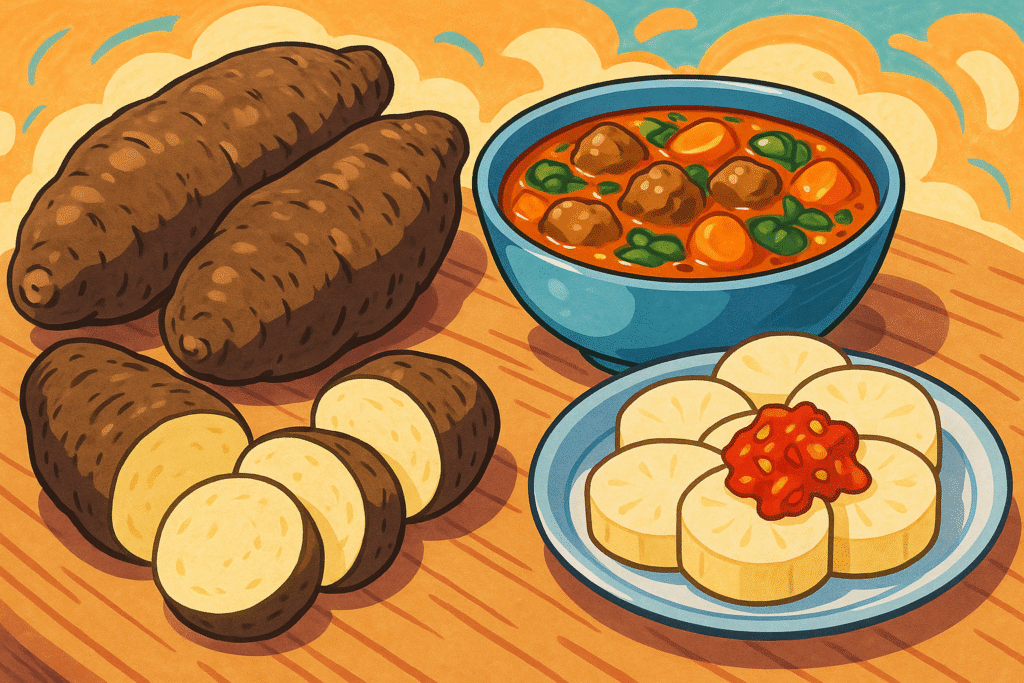Yam (Dioscorea spp.)

About Yam
Yams are large, starchy tubers with rough, bark-like skin and white, purple, or yellow flesh. Unlike sweet potatoes, true yams are drier, starchier, and more neutral in flavor — often boiled, pounded, or fried in traditional cuisines.
They’re foundational in African, Caribbean, and Southeast Asian cooking.
The History of Yam
Yams have been cultivated for over 11,000 years in West Africa, where they remain a cultural and spiritual staple. They spread to Asia and Oceania through trade and migration, becoming essential in Pacific and Southeast Asian diets.
Yam festivals mark harvest season in many African cultures, especially among the Igbo of Nigeria.
The Science of Yam
Yams are rich in complex carbohydrates, fiber, potassium, and vitamin C. Some species contain diosgenin, a compound studied for hormone-related pharmaceutical uses.
Unlike sweet potatoes, they must be cooked thoroughly — some varieties are toxic when raw.
The Geography of Yam
Yams thrive in tropical climates and are grown in West Africa, Southeast Asia, the Caribbean, and parts of South America. Nigeria is the world’s largest producer.
They’re often pounded into fufu, stewed in palm oil sauces, or sliced and fried like thick-cut chips.
Varieties of Yam
White Yam (D. rotundata)
Common in West Africa. Firm texture, white flesh — ideal for boiling or pounding.
Water Yam (D. alata)
Purple-fleshed variety. Moist, slightly sweet — used in ube desserts in the Philippines.
Chinese Yam (D. opposita)
Long, pale, and mucilaginous. Used in traditional Chinese soups and medicine.
Yellow Yam (D. cayenensis)
Firm, dense, and golden. Popular in Jamaica and Ghana.
Bitter Yam (D. dumetorum)
Less common and requires detoxification before eating. Sometimes used medicinally.
FAQs All your questions about Yam: answered
Are yams and sweet potatoes the same?
No — despite common confusion in the U.S., true yams are unrelated to sweet potatoes and have very different textures.
How do you prepare yams?
They’re usually peeled, boiled, fried, or pounded — never eaten raw.
Are yams healthy?
Yes — they’re high in fiber and complex carbs, and some contain antioxidants and bioactive compounds.
Where can I buy real yams?
African, Caribbean, and Asian markets often stock true yams, unlike U.S. grocery stores which label sweet potatoes as “yams.”